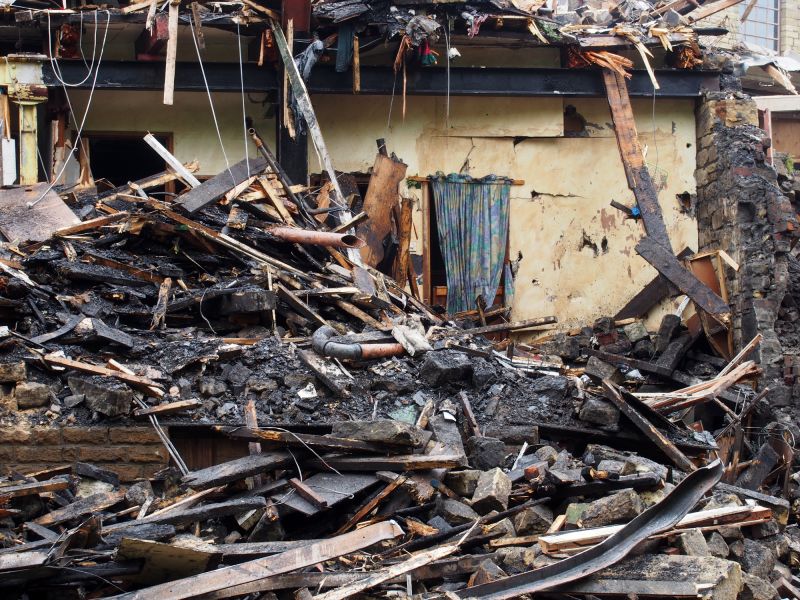Popular House Demolition Equipment for Heavy Duty Projects
Discover the most reliable tools and machinery that streamline house tearing down processes with maximum effectiveness.
 House demolitions require specialized tools and equipment to ensure the process is efficient, safe, and controlled. Selecting the right products depends on the scope of the demolition, the structure's materials, and safety considerations. Heavy-duty equipment like demolition hammers and wrecking balls are often used for larger projects, while smaller tools such as sledgehammers and pry bars are suitable for more detailed or partial demolitions. Proper planning and the right selection of tools can help streamline the process and minimize risks involved.
House demolitions require specialized tools and equipment to ensure the process is efficient, safe, and controlled. Selecting the right products depends on the scope of the demolition, the structure's materials, and safety considerations. Heavy-duty equipment like demolition hammers and wrecking balls are often used for larger projects, while smaller tools such as sledgehammers and pry bars are suitable for more detailed or partial demolitions. Proper planning and the right selection of tools can help streamline the process and minimize risks involved.
Top Overall Option
Heavy-Duty Demolition Hammer
A versatile and powerful demolition hammer offers high impact energy suitable for breaking concrete, masonry, and other tough materials. Its robust construction and adjustable settings make it adaptable for various demolition tasks, providing a balance of power and control. When choosing a demolition hammer, consider features such as vibration reduction, ergonomic design, and compatibility with different chisel types to enhance safety and usability.
Types of Products For House Demolitions
Demolition Hammers
Power tools designed for breaking concrete, brick, and stone, suitable for large-scale demolition projects.
Jackhammers
Portable pneumatic or electric tools used for breaking pavement, concrete, and other hard surfaces.
Hydraulic Breakers
Heavy machinery attachments that deliver high-force impacts for demolishing large structures or foundations.
Sledgehammers
Manual tools with a heavy head used for breaking and shaping materials in smaller demolition tasks.
Crowbars and Pry Bars
Leverage tools for prying apart materials and removing nails or fixtures during demolition.
Reciprocating Saws
Electric saws equipped with demolition blades for cutting through wood, metal, and drywall.
Rotary Demolition Drills
Power drills with rotary action, used for drilling into tough materials or creating access points.
Dust Containment Systems
Equipment designed to control dust and debris during demolition, improving site safety.
Safety Gear
Protective equipment including helmets, gloves, goggles, and dust masks essential for safe demolition work.
Concrete Crushers
Specialized attachments or machinery used to crush concrete into manageable pieces.
Wrecking Balls
Large spherical weights used with cranes for bringing down large structures or walls.
Scaffolding and Support Structures
Temporary frameworks to support structures during partial or complete demolition.
Material Removal Tools
Equipment like wheelbarrows, carts, and hoists for transporting debris and materials away from the site.
Popular Choices
Widely used power tools for breaking concrete and masonry with ease and portability.
Commonly found on construction sites, these tools provide high impact force for tough demolition tasks.
Popular for heavy-duty demolition, these attachments connect to excavators for efficient work.
A staple manual tool for breaking smaller structures or stubborn materials.
Flexible and portable saws ideal for cutting through various materials in demolition projects.
Effective for reducing airborne dust during demolition, improving site safety.
Essential protective gear that is highly recommended for all demolition activities.
Specialized saws for precise cuts in concrete and masonry during partial demolitions.
Large, heavy ball used with cranes for bringing down large walls or structures.
Necessary for ensuring structural stability during partial demolitions or renovations.
Tools for efficient removal and transportation of debris from demolition sites.
Tools used for cutting and spreading materials like metal or concrete components.
For extensive demolition projects, power tools with high torque and durability are essential. These include jackhammers, hydraulic breakers, and rotary demolition drills. Such equipment can handle tough materials like concrete, brick, and steel, providing the necessary force to break down structures effectively. Safety gear like helmets, gloves, goggles, and dust masks should always accompany these tools to protect workers from debris and dust inhalation.
In addition to power tools, manual tools remain vital for precision work and finishing touches. Pry bars, sledgehammers, and chisels help in dismantling smaller sections or removing stubborn materials. The use of protective barriers and dust containment systems can also help manage debris and dust, ensuring a safer working environment. Whether tackling a small interior renovation or a full-scale house teardown, having a comprehensive set of demolition tools is crucial for efficiency and safety.
Key Buying Considerations
- Determine the scope of the demolition project to select appropriately sized tools.
- Assess the materials involved, such as concrete, brick, or steel, to choose compatible equipment.
- Prioritize safety features like vibration reduction, ergonomic design, and safety guards.
- Consider power source options—corded, cordless, pneumatic, or hydraulic—based on mobility needs.
- Evaluate the weight and portability of tools for ease of use and transportation on-site.
- Check for adjustable settings and multiple functions to increase versatility.
- Ensure compatibility with different attachments and blades for expanded functionality.
- Review safety gear requirements and ensure adequate protective equipment is available.
- Estimate the noise levels and plan for hearing protection if necessary.
- Consider dust and debris containment options to maintain a safer work environment.
- Evaluate the availability of replacement parts and maintenance support.
- Determine the budget constraints and balance cost with durability and performance.
- Look for user reviews and ratings to gauge real-world performance and reliability.
- Check local regulations and safety standards applicable to demolition equipment use.
- Plan for proper disposal or recycling of debris generated during demolition.
This content contains affiliate links and may earn commissions from qualifying purchases. All products are recommended based on their suitability for house demolition tasks, with an emphasis on safety and functionality.
